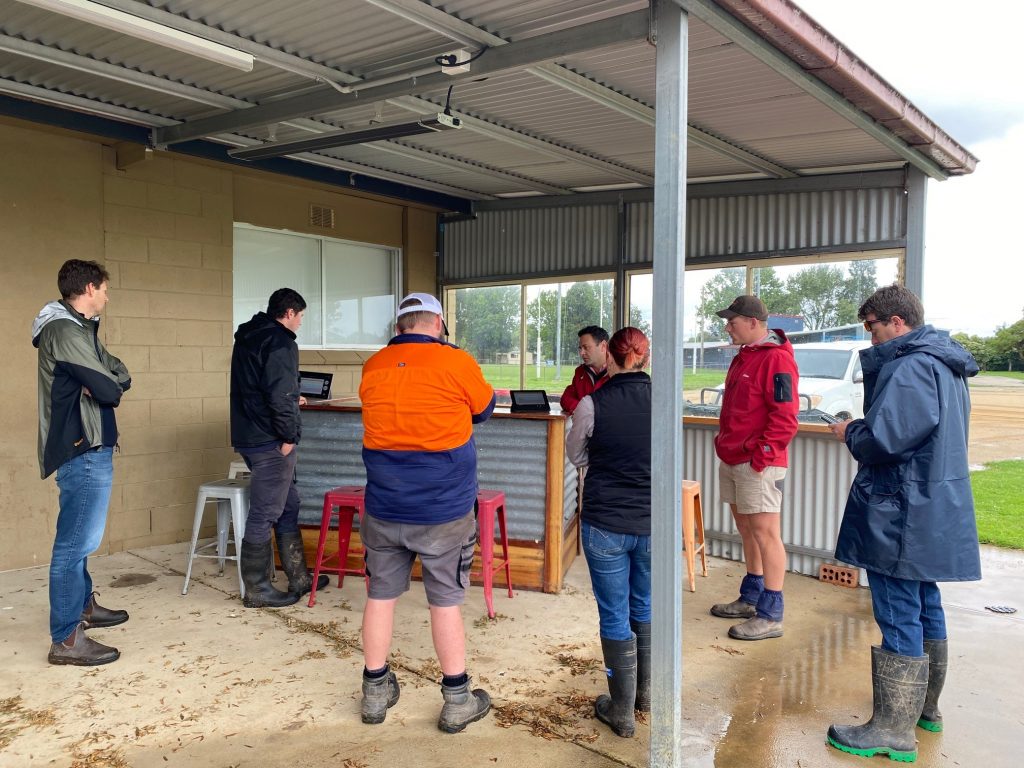Establishing VegNET Gippsland’s soil moisture monitoring demonstration
Tripod Farmers is hosting a new demonstration site of soil moisture sensors on its Boisdale property, as part of a new project – led by VegNET Gippsland – which is looking to investigate opportunities to improve water use efficiency in vegetable production in the region.
This project aims to build drought resilience among Gippsland’s vegetable producers, as well as reduce the risk of damaging nutrients and sediment entering the Gippsland Lakes.
The Growing Gippsland’s Drought Resilience with Technology and Better Soil project aims to build drought resilience among Gippsland’s vegetable producers, and reduce the risk of damaging nutrients and sediment entering the Gippsland Lakes.
Funding for this project has enabled VegNET Gippsland to invest in 20 sensors to install at Tripod Farmers.

VegNET Gippsland Regional Development Officer Bonnie Dawson said by using the sensors intensively across a several blocks, the team is hoping to understand how much of an impact irrigation variability has on the vegetable crops.
“The project has also been an opportunity to trial a different type of soil moisture technology – CropX – which is relatively new in the Australian market,” Bonnie said.
“Although it has not had much adoption within the intensive horticulture cropping setting, its robust design and comprehensive data integration were appealing to try. The past couple of months have enabled the project to get established, the Project Reference Group to become acquainted with the technology and data, and CropX Support to become acquainted with the intensive horticulture setting.
“The project has already seen a full crop produced on the control block – sensors were installed, however Farm Manager Walter Chadwick did not access this data so that we could gain an insight into his “business as usual” irrigation practice.”
Given the last couple of months have also been the wettest October and November in a long time, irrigation has been minimal.
The sensors were installed at the default depth of 20cm and 46cms, meaning the readings have lacked considerable detail for the most significant top 10cm.

“We have now overcome this by simply lifting them 10cm above the beds on the Trial site,” Bonnie said.
“This has given Walter much greater awareness of the soil moisture – drainage and uptake by the crop – to inform his irrigation schedules and he is hopeful that they are also helping him to stay on top of disease during a challenging season of extremes.
“The soil moisture data from the different sensors is showing that the impact of irrigation varies across the site. The project aims to better understand how much of this is caused by the wind, by cross-referencing this with weather station data from both a nearby public weather station and an on-farm weather station. However, they all seem to be operating in a different time zone, so another learning in the establishment phase of the project is that this isn’t quite as simple as it sounds!”
Despite the rain and these variations, the soil moisture sensors on the Trial site have helped inform Walter’s irrigation decisions hugely. Water use and the success of the crop will show just how applicable CropX sensors are to our setting.
This program/project is supported by Food & Fibre Gippsland, through funding from the Australian Government’s Future Drought Fund.

